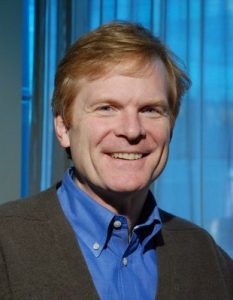The 16th Annual Perl-UNC Neuroscience Prize Ceremony and Lecture will be held April 8th in G202 MBRB.

The UNC School of Medicine has awarded the 16th Perl-UNC Neuroscience Prize to Christopher A. Walsh, MD, PhD, Chief of the Division of Genetics and Genomics at Boston Children’s Hospital and Bullard Professor of Pediatrics and Neurology at Harvard Medical School, for the “discovery of genes and mechanisms regulating human cortical development.”
William L. Roper, MD, MPH, Dean of the UNC School of Medicine, presented the Perl-UNC Neuroscience Award to Dr. Walsh in a ceremony Friday April 8 at UNC’s Medical Biomolecular Research Building (MBRB). Following the presentation of the award, Dr. Walsh presented a lecture, titled “One brain, many genomes: somatic mutation and genomic diversity in human cerebral cortex”. It was followed by a short reception on the MBRB patio.
“Dr. Walsh’s study of genetic mutations and gene functions associated with abnormal brain development has provided invaluable new insights into how the human cerebral cortex develops,” said William Snider, MD, director of the UNC Neuroscience Center and chair of the Perl-UNC Neuroscience Prize selection committee. “Further, his work provides a foundation for improved diagnosis and treatment of several pediatric brain diseases including autism. We are extremely pleased to welcome him as our 16th recipient of this prize honoring the late Dr. Edward Perl, a pioneering researcher at UNC for many years.”
Walsh, who is also a Howard Hughes Medical Institute investigator, and collaborators have defined the genetic mechanisms of developmental abnormalities of the human brain, including conditions where cortical neurons fail to migrate and form the normal cortical layers. Recently Walsh and collaborators have identified mutations in more than 10 genes that cause a condition called microcephaly (small brain), which is a major cause of intellectual disabilities. Some of the genes control the mechanisms of cell division; others control the structure of chromatin – how DNA is packaged inside cells and how gene expression is regulated. Also, Walsh and collaborators found that many of these genes control cell fate – whether cells become neurons or continue to divide as progenitor cells or stem cells. This plays a direct role in the size of the brain.